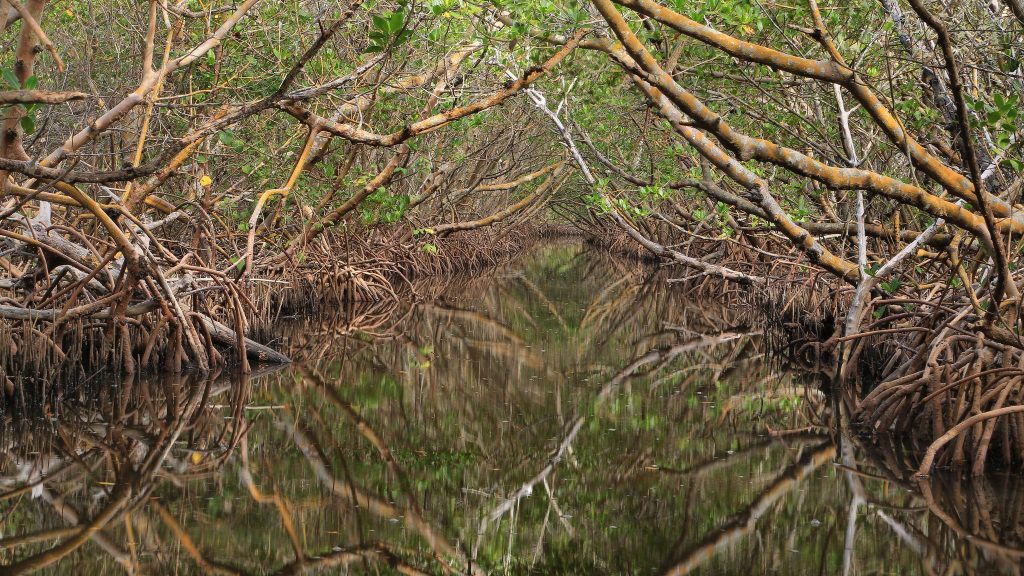Identifying the Ecological and Management Implications of Mangrove Migration in the Northern Gulf of Mexico

Project Information
Principal Investigator: Michael Osland, USGS Wetland and Aquatic Research Center
Project Completion: July 2021. This project is now complete.
Implements Science Plan Theme: Adaptation
Overview
Climate change is transforming ecosystems and affecting ecosystem goods and services. Along the Gulf of Mexico and Atlantic coasts of the southeastern United States, the frequency and intensity of extreme freeze events greatly influences whether coastal wetlands are dominated by freeze-sensitive woody plants (mangrove forests) or freeze-tolerant grass-like plants (salt marshes). In response to warming winters, mangroves have been expanding and displacing salt marshes at varying degrees of severity in parts of north Florida, Louisiana, and Texas. As winter warming accelerates, mangrove range expansion is expected to increasingly modify wetland ecosystem structure and function. Because there are differences in the ecological and societal benefits that salt marshes and mangroves provide, coastal environmental managers are challenged to anticipate effects of mangrove expansion on critical wetland ecosystem services, including those related to carbon sequestration, wildlife habitat, storm protection, erosion reduction, water purification, fisheries support, and recreation. This project produced information that is relevant to scientists and coastal resource managers working within the transition zone between mangrove forests and salt marshes. The two primary products are: (1) an investigation that leverages data and information from a community-curated data network called the Mangrove Migration Network to refine temperature thresholds for mangrove range expansion in a warming climate; and (2) a review article that examines current understanding of the effects of mangrove range expansion and displacement of salt marshes on wetland ecosystem services, including those related to carbon sequestration, wildlife habitat, storm protection, erosion reduction, water purification, fisheries support, and recreation.
